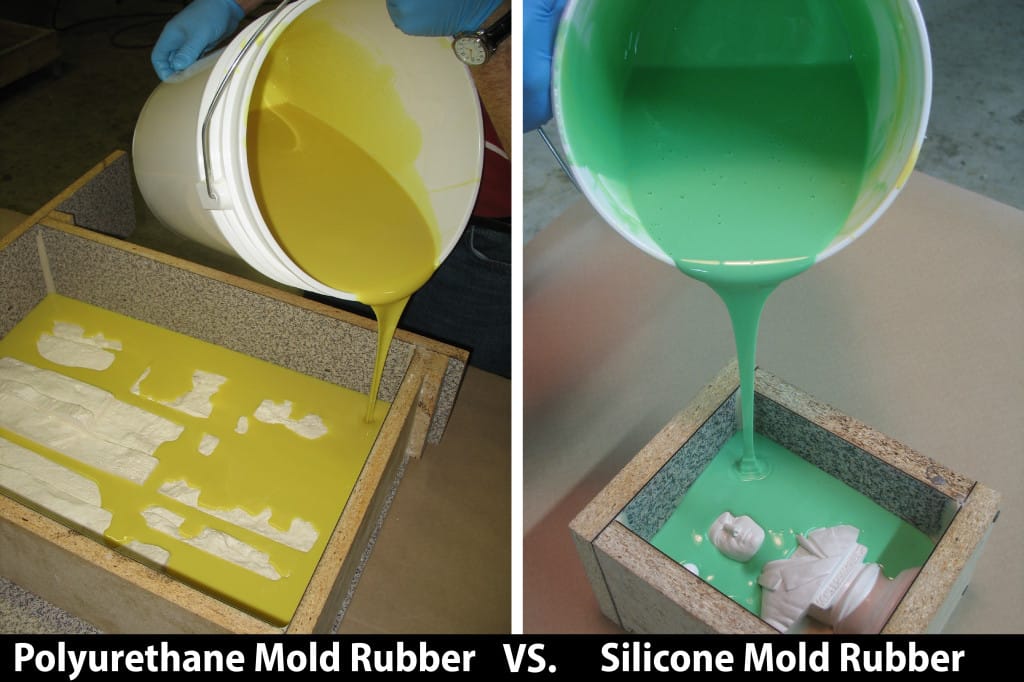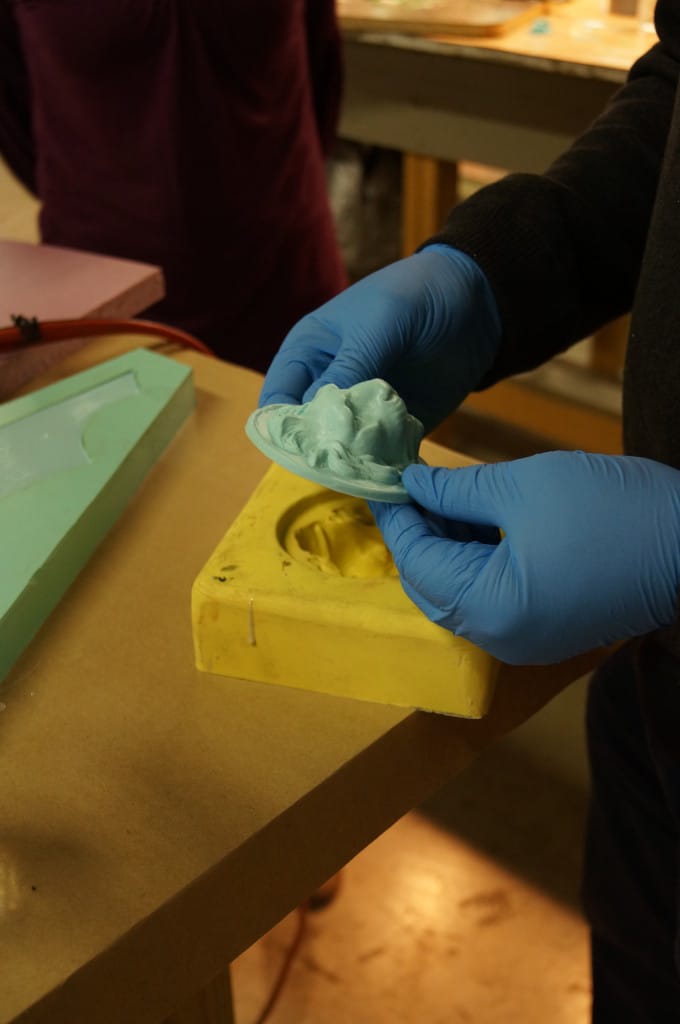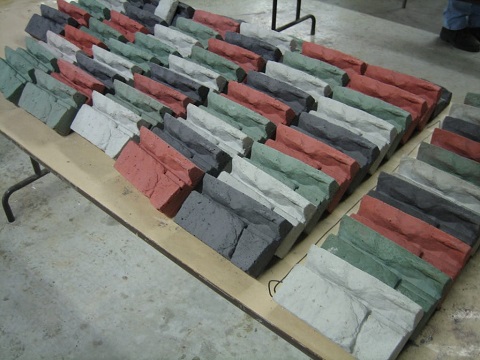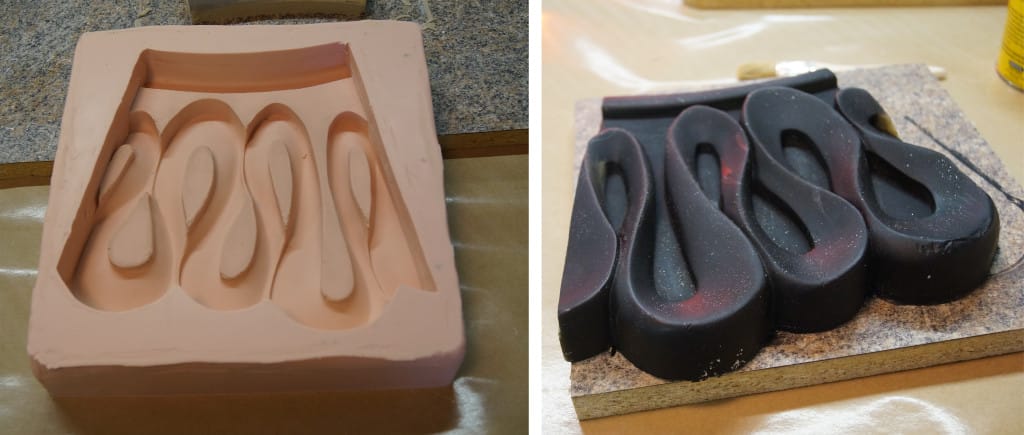Should I Use Polyurethane Mold Rubber or Silicone Mold Rubber?
 You’re in the planning stages of your mold
making project and you need to decide which rubber is more suitable for your process: polyurethane mold rubber or silicone mold rubber?
You’re in the planning stages of your mold
making project and you need to decide which rubber is more suitable for your process: polyurethane mold rubber or silicone mold rubber?
Each option has advantages and disadvantages and there are a wide variety of options in each of the product lines themselves (e.g., there are over 30 individual options within the polyurethane rubber line – they vary by hardness, pour time, cure time, viscosity and color, among other factors).
For the purposes of this article, we’ll focus on three general mold rubber categories: polyurethane mold rubber, tin-cured silicone mold rubber and platinum-cured silicone mold rubber.
General Advantages & Disadvantages of Each Rubber
|
Mold Rubbers: Advantages & Disadvantages |
|||
|
Type |
Advantages |
Disadvantages |
Mold Making Methods |
|
|
Higher strength Low to moderate cost Wide range of Hardnesses |
Requires careful application of release agent Moisture sensitive (in liquid form) |
Pour Brush Spray |
|
|
No release agent needed Excellent chemical resistance |
Higher cost Shrinks on cure (~1%) Cured rubber has limited storage life |
Pour Brush Spray |
|
Platinum-Cured Silicone Rubber
|
No release agent needed No shrink on cure Cured rubber has long storage life Excellent chemical resistance |
Higher cost Cure inhibited by some surfaces |
Pour Brush Spray |
There are three major questions that need to be asked when deciding between polyurethane mold rubber and silicone mold rubber.
- What casting material am I going to use?
- How many castings do I need to make?
- What material is my model (a.k.a master) made of?
1. What Casting Material am I Going to Use?
Concrete – Polyurethane mold rubbers work very effectively and are the “go-to” option for casting concrete. In some cases, a release agent is not required when casting concrete in these molds, but it depends greatly on the components of the concrete mix. Polyurethane rubber options vary from a Shore Hardness of A20 to D45, which allows for a wide variety of concrete applications, including concrete statuary, form liners, countertops, stamping mats and much more.
Wax or Plaster – Polyurethane mold rubbers are a popular option for casting wax or plaster. Typically, softer options in the line-up are used: 74-Series & Polygel® Series.
Polyurethane and Polyester Resins – Silicone rubbers are often used to cast these resins. In most cases, a release agent is not necessary and a large quantity of castings can be made from one mold when designed and used properly.

An EasyFlo 60 (polyurethane plastic) casting removed from a PlatSil® 73-40 silicone rubber mold [click here for a tutorial on making this mold]
Epoxy Resins – Silicone rubbers are sometimes preferred for casting epoxy resins because a release agent is not needed; however, the corrosive curing agent in epoxies quickly wears down silicone rubber and results in limited castings. Therefore, polyurethane rubber with a suitable release agent (e.g., Pol-Ease® 2300 Release Agent) is often used instead.
Polyurethane Foam– Silicone rubbers are usually recommended for use when casting polyurethane foam, as they last longer than polyurethane rubber molds and do not require application of a release agent (e.g., paste wax, PVA) prior to casting.
Most of these materials can be cast in either polyurethane or silicone molds; the options mentioned above are general recommendations based on popular preference. Based on the section below, you may decide on a different option.
If your casting material is not mentioned above, please give us a call to discuss your project.
2. How Many Castings Do I Need to Make?
Now that you have an idea of what products are most popular for casting certain materials, the next consideration is quantity:
Concrete, Plaster & Wax– In well-designed polyurethane rubber molds, hundreds of these castings can be made. In this case, it may not be worth it to spend more money on silicone rubber if you’re able to successfully cast a large quantity with polyurethane rubber molds (NOTE: Silicone rubbers may cause efflorescence in concrete castings).

Polyurethane and Polyester Resins– As mentioned in the previous section, silicone rubbers are generally the best option for casting these materials. Upwards of one hundred parts can be cast in these molds. If you only require 10-20 cast parts, then you might opt to use less-expensive polyurethane mold rubber. You will get a limited amount of castings and will need to use a release agent. If the cast parts need to be painted, the release agent would need to be washed off, which can be difficult.
Epoxy Resins – If a small amount of epoxy castings are needed, silicone rubber may be a suitable option and does not require a release agent (which is helpful if the cast parts need to be painted). If a larger quantity of epoxy castings are required, polyurethane rubber with a suitable release agent is typically the best option.
Polyurethane Foam – In many circumstances, upwards of one hundred foam castings can be made in silicone rubber molds. Like the polyurethane and polyester resins listed above, a more economical approach (if you require fewer castings) would be to make a polyurethane mold instead. A release agent, like PolyCoat (a silicone-based, semi-permanent sealer and release agent), should be applied to the mold in this case.

A TinSil® 80-30 silicone rubber mold [left] is used to cast R-8 PolyFoam [right]
3. What Material is My Model Made of?
First, if the model is a human being or animal, careful consideration and investigation into appropriate skin-safe mold materials needs to be completed. Mold materials such as Skin-Wax, Hydrogel®, or PlatSil® Gels (a platinum-silicone rubber) may be viable options.
Some Other Considerations:
Certain mold rubber materials will suffer from cure inhibition (i.e., failure of a compound to cure against a surface within the recommended cure time) when applied to particular model materials. For instance, platinum-cured silicones will not cure properly when poured over sulfur-containing clay. They can also suffer from cure inhibition when applied to certain plastics (e.g., some plastics used in 3-D printing), polyester resins, some epoxy resins and any model that has had tin-cured silicone rubber or latex rubber applied to it in the past.
Inhibition issues can sometimes be overcome by very careful application of a sealing agent to the model (e.g., PVA, shellac, paint, Vaseline, PolyCoat).
Generally, polyurethane rubbers and tin-cured silicone rubbers are not sensitive to cure inhibition.
Damage to Models:
No matter what the mold material is, there is always a chance that a model could get damaged in some way during the mold making process. Using silicone rubbers may eliminate the need for release agents (which have the potential to affect the model); however, the oils from silicone rubbers also have the potential to affect the model in some way. It is recommended to always perform a small test cure on the model before making the entire mold.
Every mold making project is unique; please contact us with any questions you have as you decide what rubber mold material is best for your project.